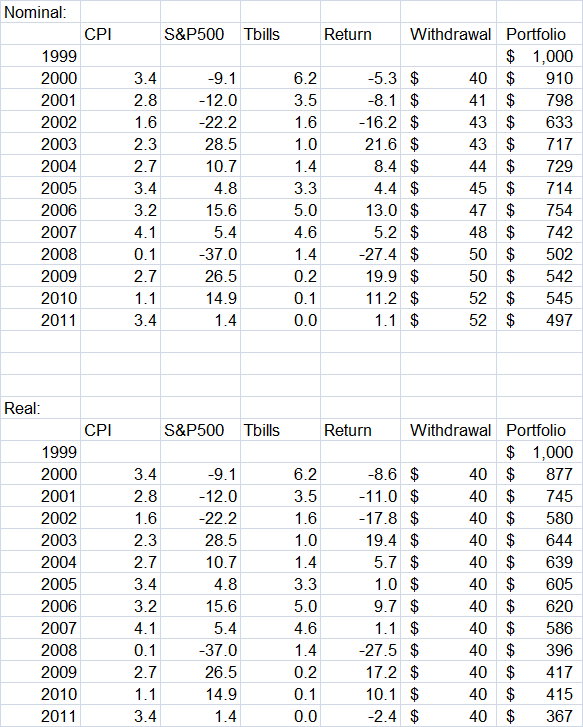i think your confused. whats needed to have them hold true isnt 4% real returns ,according michael kitces its less than 1% REAL RETURNS .
the 4% swr is based on the worst returns any of the retiree groups had .
rolling 30 year periods are looked at and analyzed.
since the first 15 years make or break every time frame its crutial to look at the first 15 years.
for a 60/40 mix those average returns , for that worst ever group were an average of .86% real returns for a 15 year period .
the 4% swr still held true for them going out the full 30 years. .. thats less than a 1% real return and you were able to last at least 30 years and had money left over to boot.
all you need is a real return of .86% over the first 15 years of a retirement and that rule will hold.
so lets look at this very moment .bonds are at zero real return because the 15 year bond is around 2% and inflation is around 2% so assume they stay there at zero real return for the next 15 years. , so all stocks need to return is 1% by 2028 which is 15 years from now for the rule to hold because we are looking at worst case scenerios.
since stocks are pretty much where they were in 2000 now do you think the markets can return 1% real return average over 28 years? it will be 28 years in 2028 which already puts the odds of a 1% real return move in the next 15 years pretty good.
for the record the historical average real return for equites is 8% so a 1% move should be a piece of cake now.
folks miss the biggest thing about the 4% swr, and that is its based on surviving the worst returns,sequences and inflation ever to date.
if anything the swr of 4% is to low and leaves way to much on the table. over 96% of the time more then the origonal starting principal was left over at the end of 30 years.
pretty spooky that a 1% real return is all thats needed to maintain an inflation adjusted swr for 30 years.
i thank michael kitces for those most excellent points and the math to go with them..
What Returns Are Safe Withdrawal Rates REALLY Based Upon? - kitces.com | Nerd's Eye View

